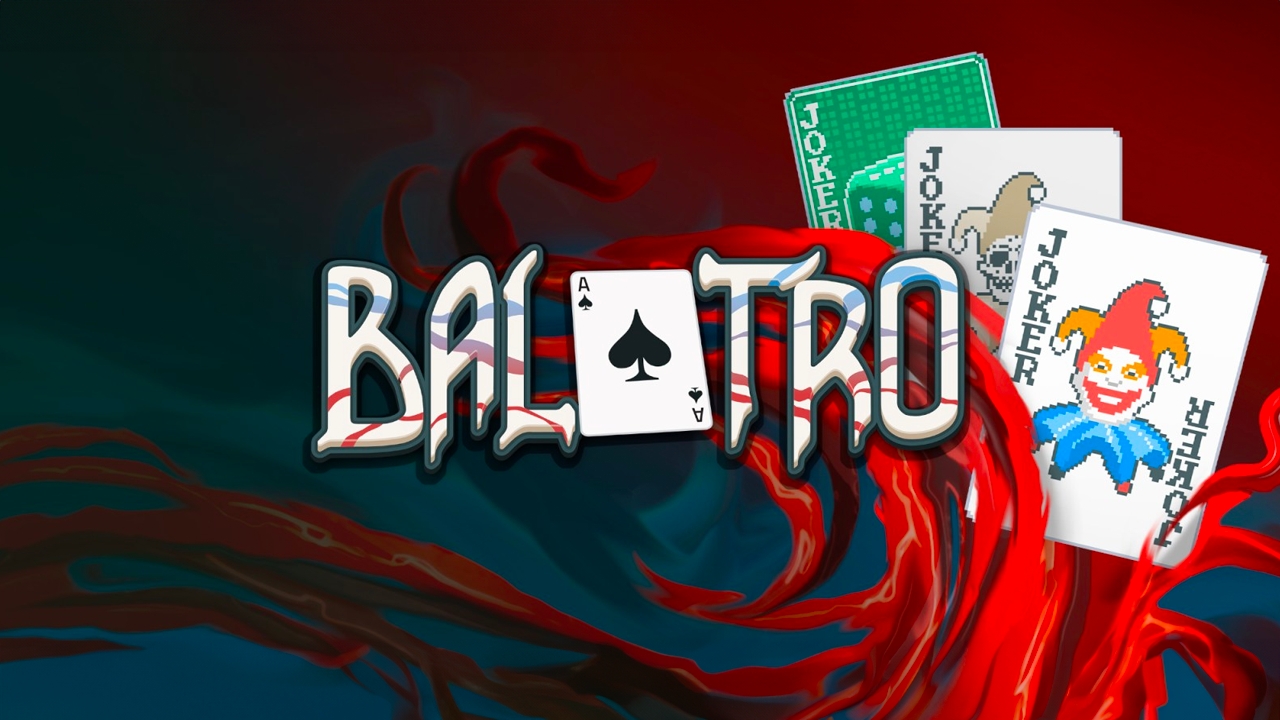An analysis of the strengths and weaknesses of each deck, followed by a ranking according to their overall value.
How Decks Are Scored
Scoring has been categorized into four distinct aspects, each rated on a scale of ten, with the final score being the sum of all four category scores.
DISCLAIMER: THE FOLLOWING GUIDE UTILIZES ARBITRARY NUMERICAL VALUES AS COMMONLY SEEN IN RANKINGS. IT SERVES AS A FUN THOUGHT EXPERIMENT AND A GUIDE TO HIGHLIGHT THE STRENGTHS AND WEAKNESSES OF EACH DECK, HELPING YOU CHOOSE BASED ON YOUR PLAYSTYLE.
The categories are:
- Stability: Evaluates the deck’s effectiveness at the outset and its ability to secure early wins during the initial blinds. High stability indicates a greater likelihood of reaching the midgame, while low stability suggests difficulty in winning before the first ante without substantial luck or flawless play.
- Ease of Play: Assesses the smoothness of transitioning from the mid-game to victory, considering whether the deck necessitates additional strategic considerations or offers advantages that simplify decision-making or hand acquisition.
- Versatility: Examines the deck’s proficiency in accommodating various builds. Does the deck synergize well with certain cards or strategies? Are there any elements that disrupt its synergy? Are there multiple viable builds, or does gameplay typically follow a predictable pattern, leading to stagnation if key cards are missing?
- X Factor: Gauges the deck’s impact when it performs exceptionally well. Does the deck consistently deliver strong end-game results? If guaranteed to reach ante 8, how much further can the deck typically progress on average?
Each deck begins with a base score of 5 in each category, with significant advantages or disadvantages altering the ratings accordingly. At the time of writing, I have achieved victories against the Orange Stake on the Yellow Deck, dominated the Red Stake on most decks, and secured at least one win with each deck to gain insight into their playstyles.
I endeavored to minimize personal bias in this assessment. While I personally favor stability when selecting decks, my preferences did not lead to the Black Deck ranking among the bottom three.
Now, let’s proceed from the lowest score to the highest score.
Painted Deck – 17 points
The Painted Deck offers a trade-off: a +2 hand size boost in exchange for a -1 joker slot.
Stability – 8
The Painted Deck provides a slightly more stable early game, enhancing consistency in drawing cards.
Ease of Play – 5
Maintaining a larger hand size can aid in executing better hands, yet the dilemma of joker selection poses a significant challenge.
Versatility – 4
While proficient in producing straights and facilitating early game four of a kind and straight flushes, the deck’s limited joker slots hinder adaptability and strategic diversity.
X Factor – 0
The absence of an extraordinary factor inhibits the deck’s potential for remarkable end-game performance.
The Painted Deck’s capacity to exit ante 2 consistently is bolstered by increased card draw and improved hand quality. However, the reduction in joker availability severely impacts end-game potential, as demonstrated by the sole victory achieved with multiple negative jokers. The convenience of larger hand size is outweighed by the perpetual dilemma of joker selection.
Although it excels in certain hand combinations, its inherent limitations impede overall success, relegating it to the lowest scoring position among the decks.
Green Deck – 21 points
The Green Deck eliminates interest, replacing it with a +1 additional money reward for each unspent hand or discard.
Stability – 4
This deck struggles to maintain stability due to its reliance on consistent winning hands for financial gain.
Ease of Play – 3
Balancing hand management and expenditure proves challenging, detracting from the ease of play.
Versatility – 7
The Green Deck excels in money-centric strategies, albeit dependent on steady hand victories to capitalize on its unique mechanic.
X Factor – 7
While effective in money builds, the deck’s versatility is hampered by its susceptibility to certain stakes, limiting its potential impact.
The Green Deck shines brightest in money-oriented strategies, requiring a steady stream of winning hands to capitalize fully on its unique mechanic. However, personal preference may influence its perceived effectiveness, with some players finding it less rewarding in practice. Although it boasts potential with certain combinations like +1 hand and +1 discard vouchers, its effectiveness can be heavily diminished by specific stakes, particularly the Blue Stake. Despite its inherent limitations, the deck’s ability to navigate without penalty through certain scenarios provides a notable advantage.
Magic Deck – 22 Points
The Magic Deck starts with the Crystal Ball voucher (+1 consumable slot) and two copies of The Fool (which duplicates the last played tarot or planet card).
Stability – 7
With three copies of the initial tarot card, the Magic Deck offers considerable stability, especially when coupled with diverse early game options.
Ease of Play – 5
While providing ample early game support, the deck’s long-term effectiveness diminishes, particularly due to the limited utility of the +1 consumable slot.
Versatility – 6
The starting configuration of five tarots played fosters versatility, yet the deck’s late-game potential is hindered by its lack of impactful abilities.
X Factor – 4
While offering stability and early game advantages, the Magic Deck’s limited late-game utility may leave players feeling underwhelmed, especially if stakes are high.
The Magic Deck exhibits commendable stability, leveraging its initial tarot configuration to provide strategic advantages in the early game. However, its long-term viability is compromised by the marginal utility of the +1 consumable slot. While versatile in the early stages, the deck’s lack of significant late-game impact may prove disappointing, particularly in high-stakes scenarios where defeat could occur before key abilities come into play.
Black Deck – 23 points
The Black Deck sacrifices one hand for an additional joker slot.
Stability – 0
This deck struggles in the early game, with reduced hand size making it challenging to compete effectively against the blinds.
Ease of Play – 5
Navigating the game with fewer initial cards adds complexity, although the added joker slot can offer strategic opportunities later on.
Versatility – 8
Despite its early game weaknesses, the Black Deck shines in versatility, capitalizing on the extra joker slot to potentially dominate the late game.
X Factor – 10
While challenging to master, the deck’s potential for success skyrockets in the late game, offering unparalleled rewards for those who can endure the early struggles.
The Black Deck presents a formidable challenge, particularly in the early game, where its reduced hand size hampers progress. However, for those who persevere, the deck rewards with unparalleled versatility, facilitated by the additional joker slot. Although victories may be hard-won, they often result in remarkable late-game performances, akin to hitting the jackpot in a slot machine.
Checkered Deck – 24 points
The Checkered Deck restricts players to Hearts and Spades, starting with 26 cards of each suit (two of each rank per suit).
Stability – 9
Flush builds become effortless with this deck, providing a stable foundation for early game success.
Ease of Play – 8
The simplicity of focusing on flush builds streamlines gameplay, reducing the need for complex decision-making.
Versatility – 0
While flush builds excel, the deck’s lack of versatility limits strategic options, particularly in late-game scenarios.
X Factor – 5
Although flushes offer strong early game advantages, the Checkered Deck’s lack of versatility may hinder long-term success, especially against more varied opponents.
The Checkered Deck’s specialization in flush builds streamlines gameplay, offering a straightforward path to early game success. However, its lack of versatility restricts strategic options, particularly in late-game scenarios where varied strategies may be necessary for victory.
Abandoned Deck – 25 points
The Abandoned Deck starts with only 40 cards and lacks face cards, promoting a thinner starting deck for enhanced consistency.
Stability – 5
Despite its thinner starting deck, the Abandoned Deck offers decent early game stability, particularly with the potential for frequent four of a kind hands.
Ease of Play – 8
Navigating the game with a reduced deck size simplifies decision-making, although certain face card-based strategies are unavailable.
Versatility – 4
The absence of face cards limits versatility, although other jokers may benefit from the increased frequency of non-face card draws.
X Factor – 8
While initially appealing, the Abandoned Deck’s long-term success hinges on maintaining consistency, with potential for high reward if managed effectively.
The Abandoned Deck’s thinner starting deck promotes consistency and frequent four of a kind hands, offering stability in the early game. However, its lack of face cards limits versatility, requiring players to adapt their strategies accordingly.
Red Deck – 26 points
The Red Deck grants an additional discard.
Stability – 7
The extra discard enhances early game stability, facilitating more efficient building of high-value hands.
Ease of Play – 6
Increased discard capacity simplifies hand management, offsetting the deck’s early game inconsistency.
Versatility – 8
The added discard offers flexibility, particularly when combined with discard-based jokers for money-making opportunities.
X Factor – 5
While beneficial, the additional discard’s impact may not always be significant, particularly at higher stakes where its effects are counteracted.
The Red Deck’s extra discard provides early game stability and facilitates efficient hand management, offering flexibility in strategic decision-making. However, its impact may diminish in higher stakes scenarios, where its benefits are offset by opposing factors.
Blue Deck – 26 points
The Blue Deck grants an additional hand.
Stability – 8
Enhanced early game economy potential boosts stability, especially in securing necessary resources for future rounds.
Ease of Play – 7
While beneficial for early game economy, the impact of the additional hand may vary depending on strategic choices and encountered blinds.
Versatility – 6
Although advantageous in many scenarios, the deck’s reliance on hand-building strategies limits versatility in comparison to other options.
X Factor – 5
While effective in certain situations, the Blue Deck’s overall impact may not always be significant, particularly against blinds with specific mechanics.
The Blue Deck’s extra hand provides early game stability and economic advantages, enhancing strategic options for players. However, its utility may be diminished against blinds with unique mechanics, and its versatility is somewhat restricted compared to other decks.
Yellow Deck – 26 points
The Yellow Deck offers an additional 10 starting cash.
Stability – 10
Starting with extra cash provides a significant stability boost, facilitating smoother progression through the early game.
Ease of Play – 5
While advantageous in the early game, the deck’s benefits diminish as the game progresses, requiring adaptation to overcome late-game challenges.
Versatility – 7
While primarily beneficial in the early game, the deck’s versatility allows for various strategic approaches, particularly with regard to early economy.
X Factor – 4
The Yellow Deck’s impact wanes as the game progresses, limiting its overall potential for significant late-game advantages.
The Yellow Deck’s initial cash injection offers unparalleled early game stability, enabling players to navigate the early stages with ease. However, its effectiveness diminishes over time, requiring players to adapt their strategies accordingly to maintain momentum.
Zodiac Deck – 26 points
The Zodiac Deck starts with three vouchers: Overstock, double tarot cards in shops, and double planet cards in shops.
Stability – 3
The initial vouchers hinder early game progress, making the deck’s stability reliant on subsequent strategic decisions.
Ease of Play – 6
While offering potential benefits, the deck’s consistency suffers due to the limited utility of starting vouchers.
Versatility – 9
The abundance of tarot and planet cards in shops fosters versatility, allowing for diverse strategic approaches throughout the game.
X Factor – 8
Despite early game setbacks, the Zodiac Deck’s versatility and potential for powerful combinations contribute to its overall impact and effectiveness.
The Zodiac Deck’s initial vouchers pose challenges in the early game, yet its versatility and potential for powerful combinations make it a formidable choice for skilled players.
Nebula Deck – 27 points
The Nebula Deck starts with the Observatory voucher, but sacrifices one consumable slot.
Stability – 5
While promoting hyper-focus on specific hand types, the deck’s stability suffers due to reduced versatility and potential late-game limitations.
Ease of Play – 8
Focusing on a singular hand type simplifies gameplay, enhancing ease of play despite potential drawbacks.
Versatility – 6
The deck’s focus on specific hand types limits versatility, yet strategic benefits can be significant if leveraged effectively.
X Factor – 8
The Nebula Deck’s potential for powerful hand combinations and strategic advantages contributes to its overall impact, especially in skilled hands.
The Nebula Deck’s hyper-focus on specific hand types offers both benefits and limitations, requiring strategic adaptation to maximize its potential.
Ghost Deck – 29 Points
The Ghost Deck starts with a Hex and allows spectral cards to appear in shops.
Stability – 6
The presence of spectral cards in shops offers strategic advantages, yet reliance on jokers for early game stability may pose challenges.
Ease of Play – 6
While offering unique benefits, the deck’s stability and consistency may vary depending on encountered spectral cards and strategic decisions.
Versatility – 8
The inclusion of spectral cards in shops enhances strategic options, contributing to the deck’s versatility and adaptability.
X Factor – 9
The Ghost Deck’s unique mechanics and potential for powerful late-game combinations make it a formidable choice in skilled hands.
The Ghost Deck’s inclusion of spectral cards in shops and the potential for powerful late-game combinations contribute to its overall effectiveness, especially in skilled hands.
Anaglyph Deck – 31 points
The Anaglyph Deck grants a double tag after each boss blind, totaling seven within a standard run.
Stability – 5
The delayed benefit of double tags impacts early game stability, requiring strategic patience to fully leverage their potential.
Ease of Play – 8
Once active, the double tags streamline gameplay, offering significant strategic advantages with proper planning.
Versatility – 8
The deck’s reliance on strategic skips and double tags fosters versatility, allowing for diverse strategic approaches throughout the game.
X Factor – 10
The Anaglyph Deck’s potential for significant late-game advantages, combined with its unique mechanics, makes it a formidable choice for skilled players.
The Anaglyph Deck’s delayed but potent benefits, combined with its unique mechanics, contribute to its overall impact and effectiveness in skilled hands.
Erratic Deck – 31 points
The Erratic Deck offers 52 random cards with randomized suits and ranks.
Stability – 8
While initially unpredictable, strategic card selection can enhance early game stability, offering strategic advantages in hand-building.
Ease of Play – 7
Despite its randomness, strategic card selection and identification of beneficial hand types enhance ease of play.
Versatility – 8
The randomness of card selection fosters versatility, allowing for diverse strategic approaches and potential synergies.
X Factor – 8
The Erratic Deck’s potential for powerful hand combinations and strategic benefits contribute to its overall impact and effectiveness in skilled hands.
The Erratic Deck’s random card selection offers both challenges and strategic opportunities, making it a unique and versatile choice for skilled players.
Plasma Deck – 32 points
The Plasma Deck calculates its final score by averaging two scores and squaring the result.
Stability – 9
The deck’s unique scoring system ensures early game success, particularly in high-stakes scenarios where early victories are crucial.
Ease of Play – 6
The unconventional scoring system may require a different approach to gameplay, potentially impacting ease of play for some players.
Versatility – 10
The deck’s ability to maximize points regardless of strategy fosters unparalleled versatility, allowing for diverse and adaptable gameplay.
X Factor – 7
While offering significant strategic advantages, the Plasma Deck’s unconventional scoring system may pose challenges for some players, particularly in high-stakes scenarios.
The Plasma Deck’s unique scoring system offers both strategic advantages and challenges, making it a formidable choice for skilled players willing to adapt their gameplay approach.
Ending
With all the decks assessed, the results surprisingly demonstrate a balanced spectrum, ranging from a low of 17/40 to a high of 32/40. It’s intriguing to note that only one deck failed to outweigh its downsides, showcasing the intricate balance within each option.
However, it’s essential to remember that higher point values don’t necessarily equate to objective superiority. Depending on individual perspectives on factors like “X Factor” or the pursuit of endless runs, deck preferences may vary significantly. For instance, while Painted Deck may score lower overall, it could shine in specific contexts, just as Black Deck might excel under different considerations.
Moreover, gameplay style plays a pivotal role. Some players may favor relentless retries or seeded runs, elevating the importance of different decks accordingly. This divergence underscores the subjectivity inherent in deck evaluation.
Ultimately, the pursuit is to discover a deck that balances early game stability with late game potential, offers diverse build options, and remains user-friendly. Yet, the assignment of numerical values, admittedly arbitrary, invites interpretation and debate. Perhaps one sees Painted Deck on par with Checkered Deck, while another prioritizes different attributes altogether.
In this intricate tapestry, the top contenders—Anaglyph, Plasma, and Erratic—stand virtually neck and neck, leaving the final choice to personal preference and strategic inclination.



